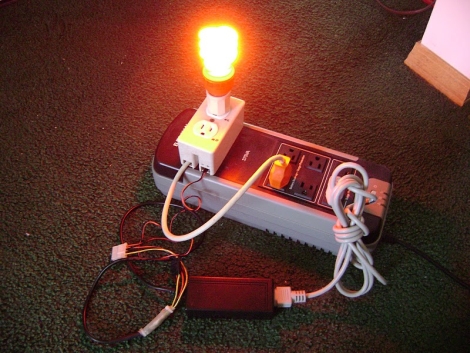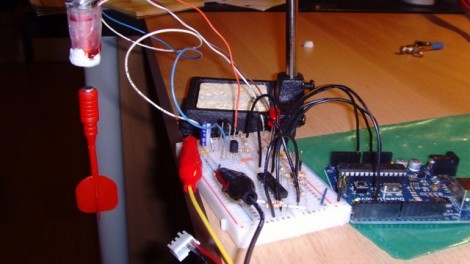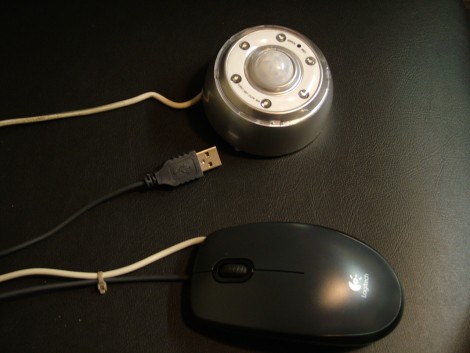
When the power goes out at home, what do you do? Most of us probably scramble around the house looking for a flashlight. [Gigawatts] wanted a better solution, so he built an emergency lighting system based off a standard household UPS. A while back he had constructed a relay-switched outlet box to help periodically restart his cable modem which would get hung up a little too often for his liking. Since changing Internet providers, he no longer needed the switched outlet box, and was looking for a way to reuse it.
He hooked up the outlet box into the “battery powered” side of the UPS, and inserted a light bub into the normally closed half of the switch box. A 5v power supply was hooked into the “surge protection only” side of the UPS and is used to keep the relay switched. This causes the half of the switch box that is normally closed to remain open, and the light switched off. When power is lost, the 5v supply no longer switches the relay, and the light is turned on – powered by the UPS battery.
This is quite a useful hack if you happen to have a spare UPS sitting around – it sure beats scrambling around searching for a flashlight in the dark!


















